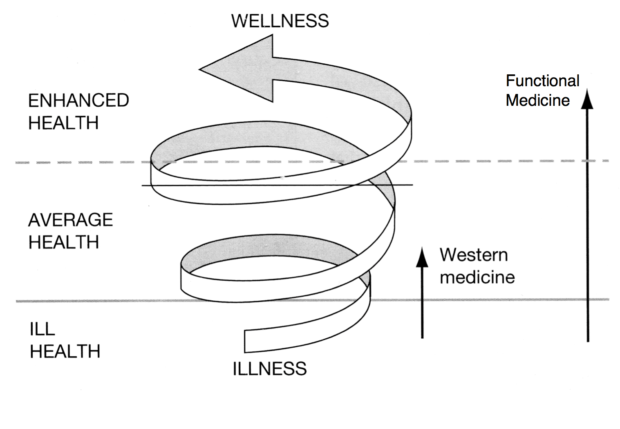How do you determine good medicine from bad medicine?
If you are reading this post, it is likely that you are interested in achieving the best health possible for you and your family. Over the past 30 years, there has been an explosion in healthcare options available to the average American and sorting through these options can be daunting and may feel like navigating a minefield at times. The aim of this post is to dispel some of this uncertainty and give you a framework for what constitutes good medicine, bad medicine and everything in between.
To get a complete picture of both good and bad medicine, one has to look at it in three dimensions.

The first dimension is the 4 objective criteria establishing the foundational spectrum between good and bad medicine. This is a number line and the foundation for the 2nd and 3rd dimension. Poor quality here (or low number, if you think of it in mathematical terms) will make it very difficult to near impossible for the full three dimensional model to ever reach “good medicine”. This dimension represents the therapy itself – the drug, herb, supplement, medical device, surgical procedure etc.
The 4 objective criteria are:
- Safety. Primum non nocere or ‘First, do no harm’. This point is by far the most important; risky therapies should only be performed in the gravest of circumstances – such as life-threatening or disabling illness.
- Effectiveness. How well does the treatment or therapy perform? This can be a straight-forward answer for most single therapies. For whole medical approaches (such as functional medicine, conventional medicine, complementary medicine etc.) it can be challenging to answer this question without taking into account the 2nd and 3rd dimensions.
- Practicality. How practical is the treatment or therapy? A very safe, effective, evidence-based therapy is not good medicine if it costs $10,000 per treatment or you have to travel halfway around the world every month to receive it.
- Evidence. What level of evidence supports the therapy? The levels of evidence can range from experimental (no evidence – but may be a good idea) to clinician experience/case reports (some evidence – but may not have been validated by other clinicians or scientists) to various levels of scientific studies of which the gold standard of evidence is the double blind randomized controlled trial (DBRCT).
The 2nd dimension is the continuum between a holistic and reductionistic view of disease. This has been called by some as the art of medicine vs. the science of medicine, but I find that terminology misleading in that it implies holistic practitioners are unscientific and reductionistic (or conventional Western) practitioners are not creative or imaginative. The art of medicine encompasses science, creativity, holism and reductionism – they all play important roles when the need arises. Rather than representing absolute numbers (like the 1st dimension) this dimension represents ranges. The ideal range being the full spectrum from holistic to reductionistic. Good medicine should encompass both views of disease, as the most profound answers arise from the synthesis of the two . The style, philosophy and experience of the individual practitioner is the greatest determining factor in how much of this spectrum is delivered to the patient, but the underlying medical approach which individual practitioner follows will have great influence as well. This dimension represents the clinician and his or her approach to the practice of medicine.
The 3rd dimension is the continuum between illness and wellness for the patient. This dimension overlays both the objective criteria and the holistic/reductionistic continuum. Whereas the 1st dimension reflects primarily the therapy and the 2nd dimension the individual practitioner, this dimension represents the medical tradition or system of medicine being followed. The goal is wellness through enhanced health. Medical traditions which strive only for average health are neither good nor bad medicine – they are only as good as they get their patients: average. Conventional medicine scores average on this dimension. Their primary goal is to pull the patient away from illness to average health but not necessarily transcend beyond this.

Where does functional medicine fit into all this? As a functional medicine practitioner, you can probably guess what my answer will be. Rather than answer it for you, I suggest you visit a functional medicine doctor and come to your own conclusions.
Thank you and stay healthy!
Did you know that Dr. Nikogosian also offers remote consultations? Click here to learn more.






